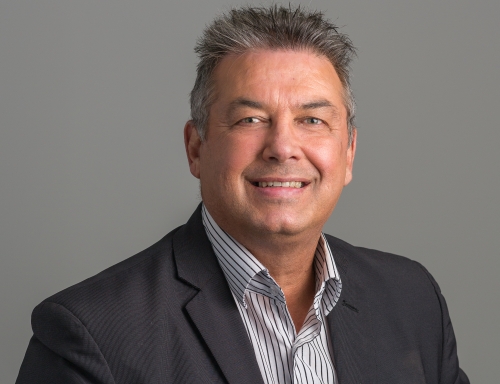The applied and vocational higher education and training sector in New Zealand is in a state of much-needed change. However, the most significant shake-up for the industry in modern history hasn’t arrived only on the back of a fundamental once-in-a-lifetime sector reform – it’s equally come via a life-preserving response to a virus.

Chief Executive at Toi Ohomai Institute of Technology
The Covid-19 pandemic challenged and changed the very nature of what was primarily a face-to-face teaching, learning and support model; and the physical nature of our office workspaces. But with this adversity came opportunity.
Digital technologies (such as Artificial Intelligence, Machine Learning, Virtual Reality, Augmented Reality and Quantum Computing) and novel communication solutions (such as wearable technology, conferencing technology, social media platforms, podcasts, WebChat and group forums) enabled and equipped us with the digital platforms and tools to transform the applied and vocational teaching and learning experience.
The exponential pace of digitisation means that we must better prepare our kaimahi and ākonga to be able and adaptive to engage in a fully digitally-led online learning and working environment. The benefits will also enhance ākonga learning-platform choice or mobility and improve traditional face-to-face modes of in-work and on-campus.
It helped us adapt our teaching and learning practices to minimise the health-risk impact on our ākonga (learners) and ensure their learning needs remained firmly at the centre of what we do. It demonstrated the flexible skillsets of our teaching and support staff but also highlighted the direction of professional development needed going forward.
These conditions have created unique challenges and opportunities borne out of necessity, catapulted us decisively into the future technology-enabled world of work, and have resulted in an enhanced ākonga and kaimahi (staff) experience.
Our kaiako (teachers) maximised learning away from the primary face-to-face delivery and seized the ability to develop independent and remote learning skills in our ākonga. The increased dependency on ever-evolving ICT technologies prompted our teams to enhance their digital literacy and adapt to a more fluid approach to their ‘new’ office-home technology-enabled working environments.
The exponential pace of digitisation means that we must better prepare our kaimahi and ākonga to be able and adaptive to engage in a fully digitally-led online learning and working environment. The benefits will also enhance ākonga learning-platform choice or mobility and improve traditional face-to-face modes of in-work and on-campus.
We have to consider how we will ensure digital equity and wellbeing for staff and students as we continue to respond to growing demand and need to operate more effectively across all modes of learning.
The pandemic has also highlighted areas where we need to develop more authentic training and education opportunities. With more Kiwis returning to our shores, and the high demand for skilled workers in local industries, we find ourselves able to bridge the training and workforce gap for our communities.
By offering quality, accessible technology-enabled education and upskilling opportunities for our people, we ensure that our rohe has the right people, for the right jobs, at the right time.
For the applied and vocational higher education sector, the change brought about by the pandemic coincided with the establishment of Te Pūkenga – New Zealand Institute of Skills and Technology, which brings together a unified network of polytechnics and industry training organisations across New Zealand. It will create seamlessness between on-the-job, on-campus, and online vocational education and training delivery through a connected and sustainable network of regionally accessible provision.
The aim is to achieve collective regional impact, which will enable the Bay of Plenty and South Waikato to be more connected to and leverage off other parts of the network, to provide greater flexibility in what, where and how our ākonga learn.
The establishment of Te Pūkenga is helping Aotearoa move to an applied and vocational education system that puts ākonga squarely at the centre. In particular, giving real effect to our Te Tiriti o Waitangi commitment to further aspirations of Māori ākonga and are fundamental to the way we will work together to achieve equity outcomes.
This shift moves us away from fitting life around learning to provide learning that works around people and their world.
Much of this work is steeped in innovative and digital practices, connecting campuses and curriculum across the country. It will be the cornerstone of a cohesive, sustainable applied and vocational education system that will improve wellbeing outcomes for all New Zealanders and supports a growing, bustling economy.
While applied and vocational education and training is changing in New Zealand, it’s a journey that will take time. However, through ongoing engagement with our stakeholders and partners, we will ensure the new-look systems and operating model delivers fit-for-purpose education and training that helps businesses and communities thrive.
Importantly, we’re also engaging with our current and future ākonga to help guide us in what Te Pūkenga will look like for them. Toi Ohomai is highly supportive of these much-needed changes and remains committed to ensuring the workforce and education needs of our rohe are met.
Whilst the advent of the Covid-19 pandemic and the Reform of Vocational Education were initially unrelated, their simultaneous arrival have emphasised the need for a new way of delivering applied and vocational education.
These changes we are undergoing are of particular importance for those communities and businesses who continue to battle through the uncertainty of the pandemic and the digital demands of the future of work.
Using the latest technologies, techniques and teaching practices, we can apply what we have learned during this pandemic to build workforces that enable future-focused industries and businesses.
Although we know things won’t go back to the way they were before the pandemic, we need to continue to look to the future and seize the opportunities we have to reimagine how we work, learn and teach going forward.




